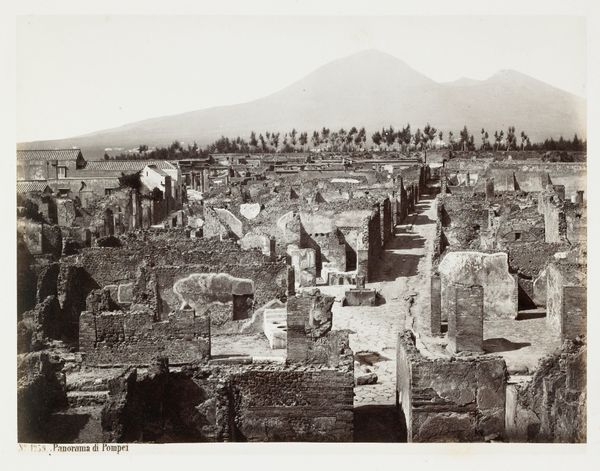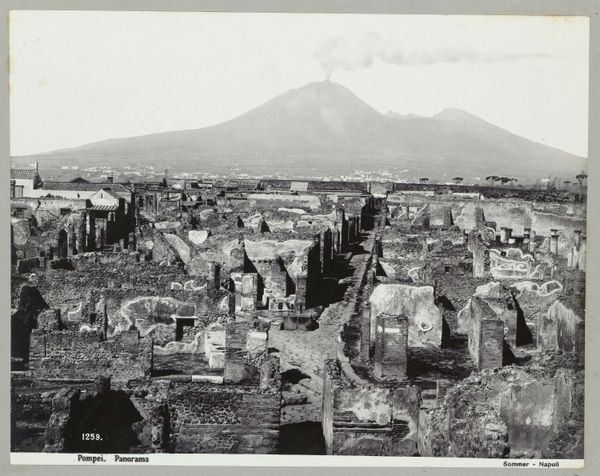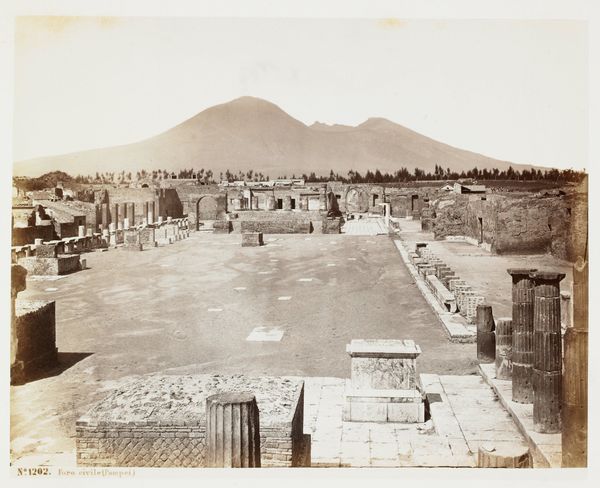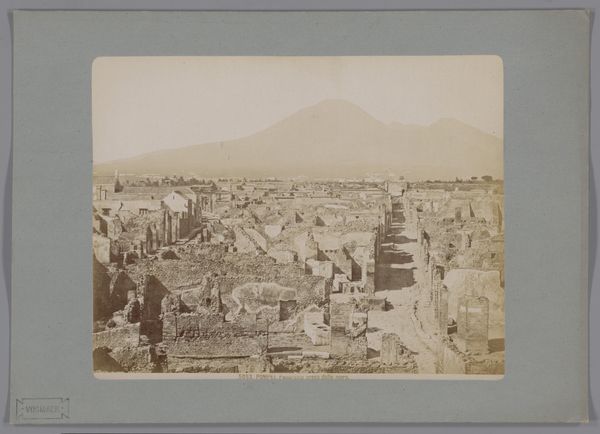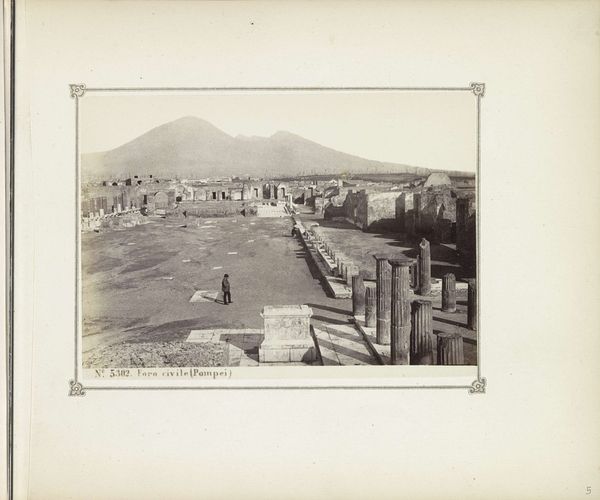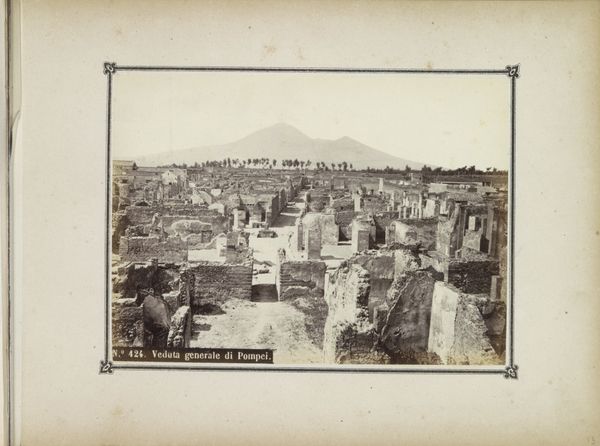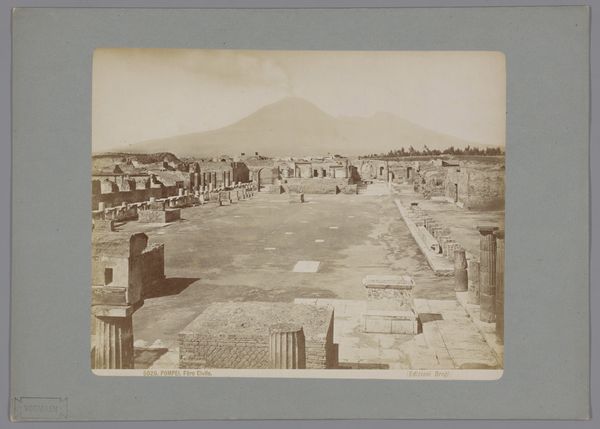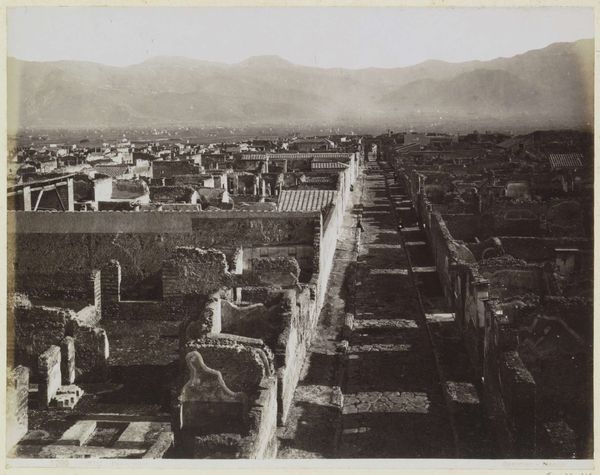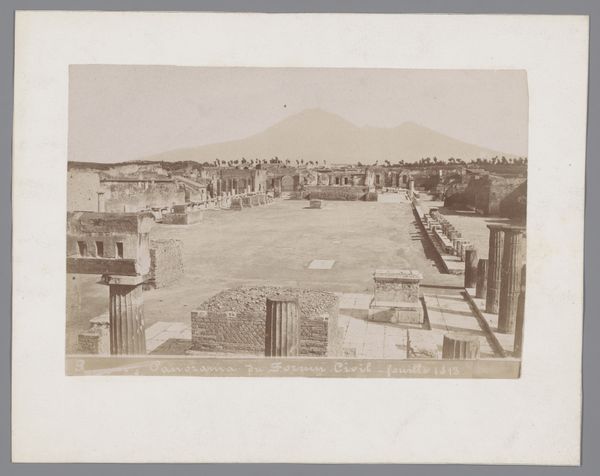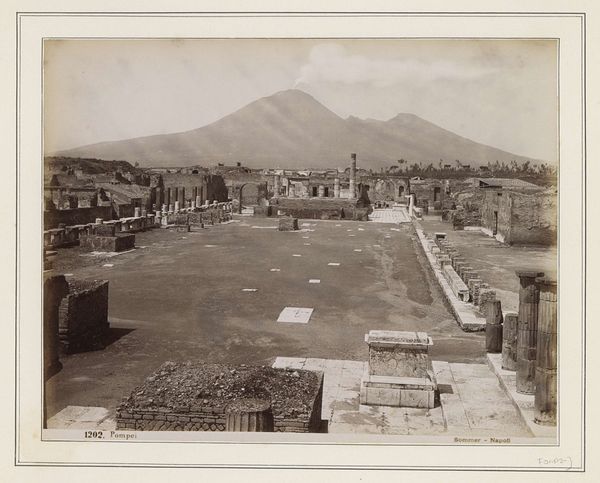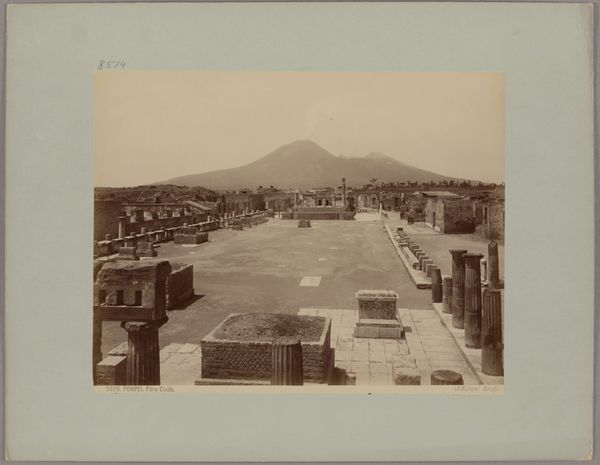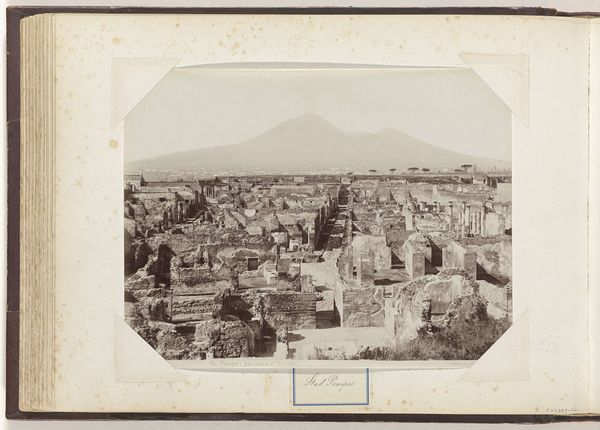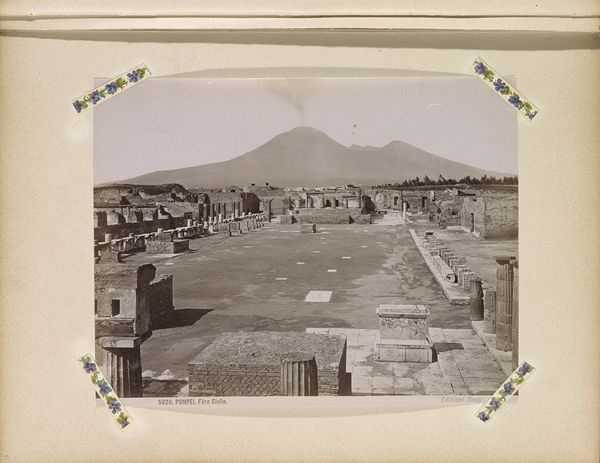
albumen-print, print, photography, site-specific, albumen-print
#
albumen-print
# print
#
landscape
#
photography
#
ancient-mediterranean
#
site-specific
#
cityscape
#
italy
#
albumen-print
Dimensions: 6 13/16 x 9 5/16 in. (17.3 x 23.65 cm) (image)
Copyright: Public Domain
Curator: Here we have Giorgio Sommer’s "Panorama di Pompei," a striking albumen print created sometime in the 19th or early 20th century. Editor: Whoa. The first thing I see is this intense stillness. You've got the ghostly outlines of ancient buildings leading your eye straight back to that imposing volcano. It's a powerful contrast, like a frozen moment pregnant with the threat of future eruption. Curator: Precisely. The albumen print process lends this work a beautiful tonal range and remarkable detail, which serves to both document and memorialize Pompeii, preserving it through image as its physical self crumbles. What was, and what may still come. The ruins stand not just as remnants but almost stage sets waiting for the next act. Editor: I love that, "stage sets." And think about the act that already occurred: Pompeii's obliteration captured as absence. The people gone, the lives interrupted, and that blank space filled by sky, and that big mountain silently looming in the background... the melodrama is palpable! There is an eery romance at play here too. Curator: The photograph served, particularly at the time, as a tangible link to the ancient world for European tourists. Pompeii’s excavation in the 18th and 19th centuries significantly impacted not only art and architecture, but also broader concepts about classical civilizations. Images like these brought that history to a much larger audience, and Sommer tapped directly into that. Editor: You're absolutely right about that audience connection. It’s interesting to think about how this image would’ve landed for them then and even how it lands on us now. Is this photo about memory? About destruction? About nature’s inevitable power over human attempts at permanence? All of the above, perhaps. Curator: It speaks to a continuity, a cycle. Cities rise and fall, civilizations flourish and disappear. Photography here, acting not just as a recorder but almost a prophet. Editor: Exactly. Seeing through Sommer's lens lets me both appreciate and be humbled by the past and contemplate time, a silent boom and bust. I wonder how it made those Victorians feel. Curator: A powerful memento mori, a very Victorian concept, really brought into sharp focus here. A ruin of a society set at the foot of impending ruin. A place laden with a very heavy human cost. Editor: Well, let's hope history doesn't rhyme too closely this time around. Food for thought, for sure.
Comments
No comments
Be the first to comment and join the conversation on the ultimate creative platform.
